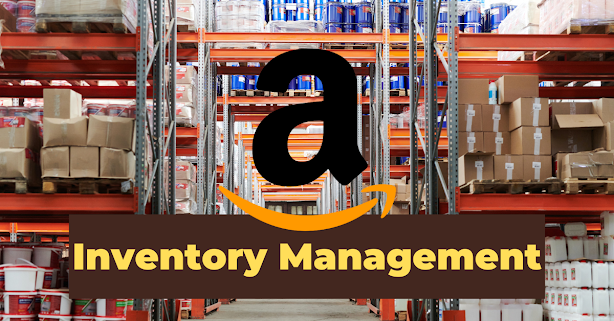In this article, we will explore essential strategies for Amazon inventory management that can help businesses thrive and maximize profit...
In this
article, we will explore essential strategies for Amazon inventory management
that can help businesses thrive and maximize profitability.
Amazon, the
world's largest online marketplace, offers tremendous opportunities for
businesses to reach a global customer base. However, to succeed on Amazon,
efficient inventory management is crucial. Managing inventory effectively not
only ensures a seamless customer experience but also contributes to improved
search engine optimization (SEO) and increased sales.
Accurate
Forecasting and Demand Planning:
Adopt
Just-in-Time (JIT) Inventory System:
Leverage
Fulfillment by Amazon (FBA):
Monitor
Inventory Health and Performance Metrics:
Implement
Effective SKU Management:
Optimize
Product Listings with Keywords:
Regularly
Review and Update Listings:
Conclusion:
Accurate
Forecasting and Demand Planning:
One of the
fundamental aspects of effective inventory management is accurate forecasting
and demand planning. By analyzing historical sales data, market trends, and
seasonality, businesses can anticipate customer demand and adjust their
inventory levels accordingly. Amazon's demand forecasting tools, such as Amazon
Selling Coach and Sales Rank, can provide valuable insights to optimize
inventory planning.
Adopt
Just-in-Time (JIT) Inventory System:
Implementing
a Just-in-Time (JIT) inventory system can significantly improve efficiency and
reduce costs. JIT involves stocking inventory only when it is needed,
minimizing the risk of overstocking or holding excess inventory. By closely
monitoring sales velocity and lead times, businesses can synchronize their
inventory levels with demand, reducing storage costs and the likelihood of
product obsolescence.
Leverage
Fulfillment by Amazon (FBA):
Fulfillment
by Amazon (FBA) is a powerful service that can simplify inventory management.
By utilizing FBA, businesses can store their products in Amazon's fulfillment
centers. Amazon handles order fulfillment, shipping, and customer service,
relieving businesses of these operational responsibilities. Additionally, FBA
enables businesses to qualify for Prime shipping and access a larger customer
base, boosting visibility and sales.
Monitor
Inventory Health and Performance Metrics:
Regularly monitoring inventory health and performance metrics is essential to identify potential issues and take corrective actions promptly.
Key metrics to track
include:
Sell-through
rate: The percentage of inventory sold
within a given period.
Inventory
turnover: The number of times inventory is sold
and replaced within a specific time frame.
Stockout
rate: The percentage of time a product is
out of stock.
Excess
inventory: The value of inventory that exceeds
anticipated demand.
Analyzing
these metrics allows businesses to optimize inventory levels, prevent
stockouts, avoid excess inventory, and make data-driven decisions to enhance
profitability.
Implement
Effective SKU Management:
Maintaining
a well-organized SKU (Stock Keeping Unit) structure is crucial for efficient
inventory management. Each SKU should have a unique identifier, making it
easier to track and manage inventory levels. Categorize SKUs based on factors
such as product type, variant, size, color, or any other relevant attribute.
Clear and consistent SKU naming conventions simplify inventory tracking and
ensure accurate inventory counts.
Optimize
Product Listings with Keywords:
SEO plays a
vital role in improving product visibility on Amazon. Conduct thorough keyword
research to identify relevant search terms that potential customers may use.
Incorporate these keywords strategically into product titles, descriptions,
bullet points, and backend search terms. This optimization enhances the chances
of your products appearing in search results and increases organic traffic to
your listings.
Regularly
Review and Update Listings:
Amazon's
algorithm rewards listings that perform well. Regularly reviewing and updating
your product listings based on customer feedback, sales performance, and market
trends can improve SEO rankings. Optimize product images, enhance product
descriptions, and address any negative customer reviews promptly. By providing
accurate and compelling information, you enhance customer trust and increase the
likelihood of conversions.
Conclusion:
Effective Amazon inventory management is essential for businesses to thrive and succeed in the competitive online marketplace. By accurately forecasting demand, adopting JIT inventory systems, leveraging FBA, and monitoring key performance metrics, businesses can optimize inventory levels, minimize costs, and enhance customer satisfaction.
Additionally, implementing effective SKU management, optimizing product listings with keywords, and regularly reviewing and updating listings contribute to improved SEO rankings and increased sales.
With a
well-executed inventory management strategy, businesses can unlock the full
potential of Amazon's vast customer base and achieve long-term profitability.
Read More:
Unveiling the Ultimate Guide to Amazon Prime Day 2023: Shop Smart and Save Big!


No comments